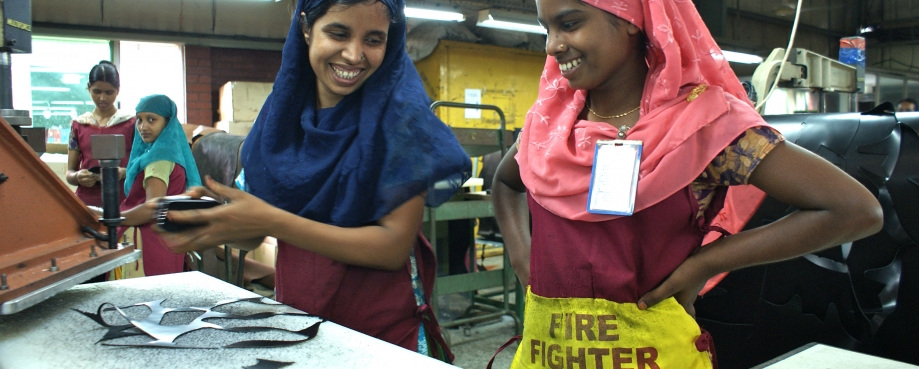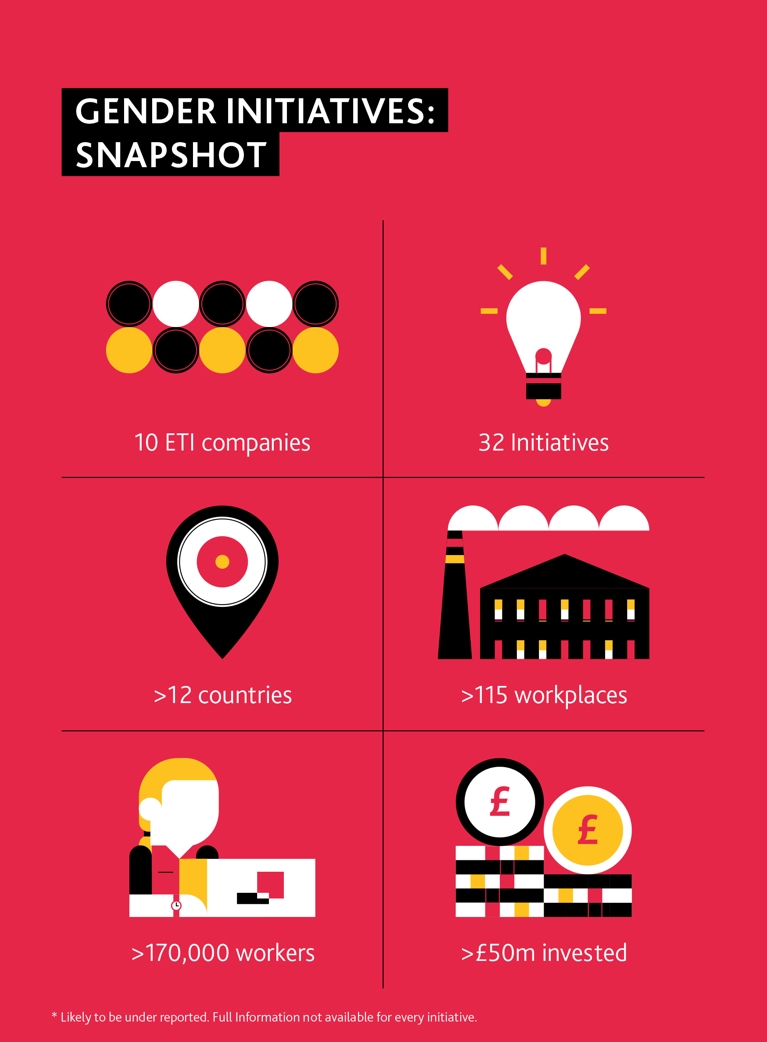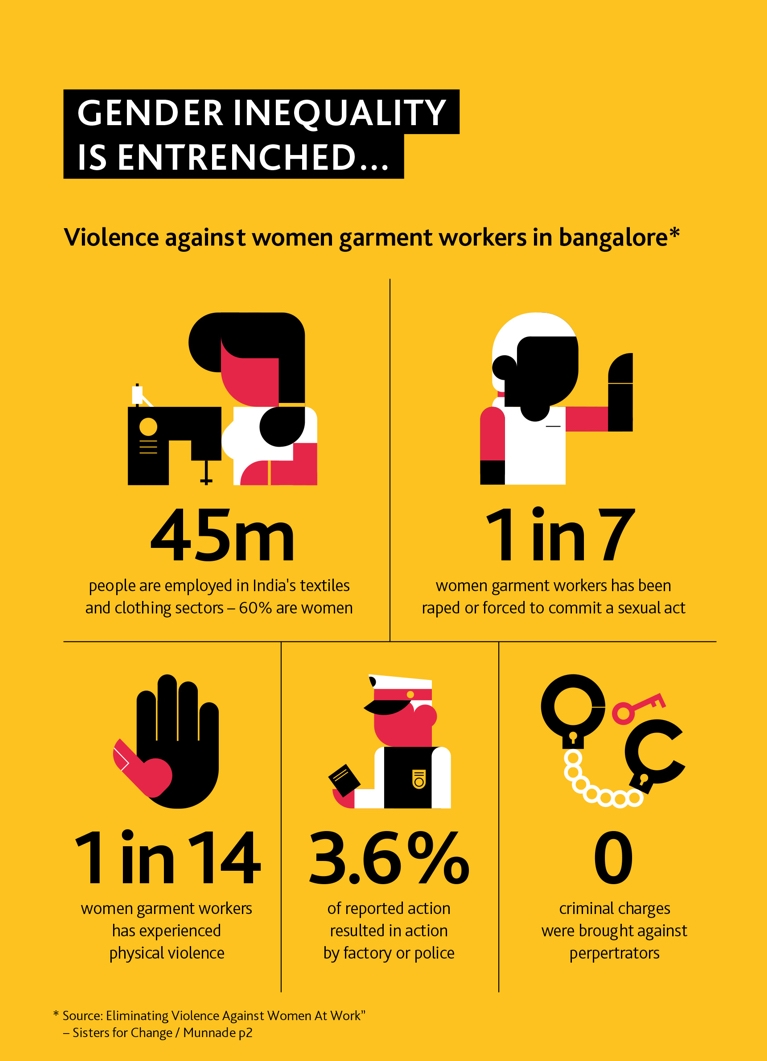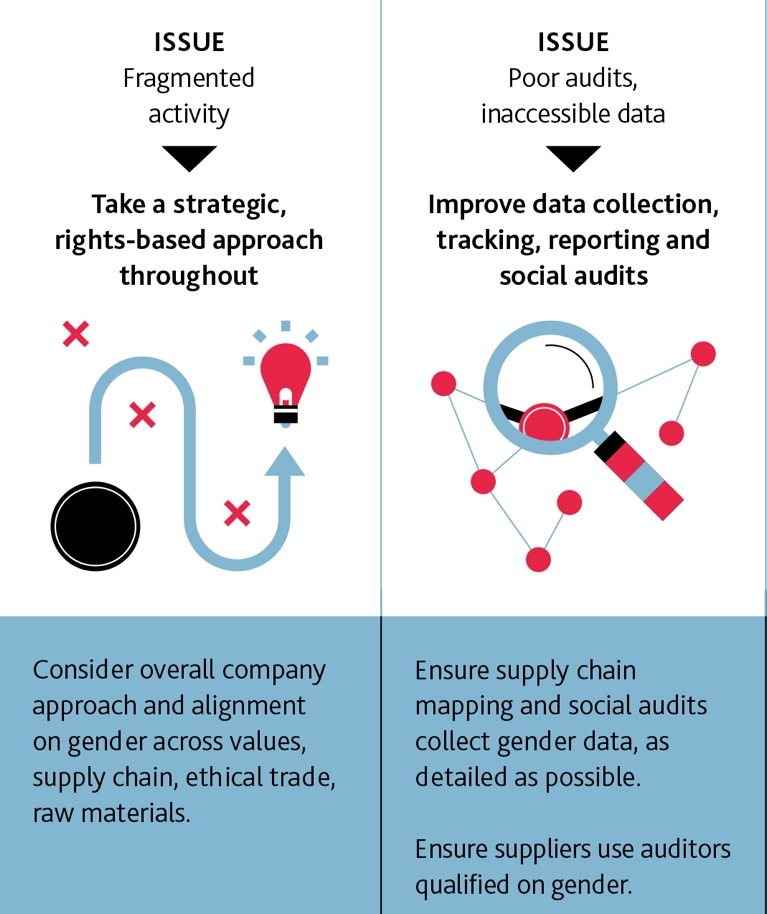
We brought together 10 brands and the University of Manchester to analyse progress being made in ensuring greater gender equality in international supply chains. ETI’s Annie Barber explains what we found and how important having a commitment to women’s rights is, especially if companies want to improve working conditions across the board.
Under the leadership of Professor Stephanie Barrientos and ETI's Cindy Berman with valuable inputs from Ergon Associates and support from the Department of International Development (DFID), leading gender experts were paired with companies taking part in the project.
The aim was to draw out learnings and identify opportunities for improvement.
Our experts found that a lot was happening. They also found that the numbers reached are likely to be higher than indicated, since information is not always available for each project.
A variety of country-specific gender projects are taking place worldwide. These range from strategic interventions to secure living wages in garment factories, to improving health services for workers.
In addition, we identified four broad types of initiatives that are also taking place across multiple countries:
- Gender Committees: safe space for women to discuss and address issues facing women workers and the wider community.
- Auditing Approach and Discrimination: understanding the effectiveness of audits for detecting gender issues and discrimination
- Fairtrade Bananas: fairtrade certification to ensure minimum price is based on cost of sustainable production to shield smallholders from downward price pressure.
- Fairtrade Coffee: fairtrade certification to ensure minimum price is based on cost of sustainable production to shield smallholders from downward price pressure.
Gender firmly on the business radar
Mapping the initiatives shows that gender is now firmly on the business radar worldwide.
But we're seeing some clumping of initiatives, not only in specific countries but in specific areas too. Companies also often work alone and duplication exists.
There’s an opportunity for much greater collaboration, both practically and in terms of policy thinking, with knock-on benefits in terms of spending and knowledge.
Currently a lot of money and time is being invested, but little is yet known about impact as not enough data has been collected.
Yet without data and sharing, it is not possible to influence more widely, make evidence-based decisions and ensure change happens.
Exciting and wide-ranging initiatives
Notwithstanding the gaps, the range of initiatives taking place is exciting and wide-ranging.
Work is happening at different levels in the supply chain, from Tier 1 factories, farms and packhouses to Tier 2 smallholder and artisanal producers.
Some initiatives are also tackling very difficult issues. These include the gender pay gap, land tenure and remuneration – and even exploring ground-breaking ways of factoring in women’s unpaid work.
Large buyers are also using their leverage to advance positive gender impacts, for example by promoting women-grown produce via procurement strategies.
Evolving attitudes
It’s important to emphasise that we are seeing progress and a major evolution in attitudes.
There is increasing collaboration with NGOs and trade unions and a growing respect for freedom of association and collective bargaining.
Even though change takes time and commitment, we are seeing movement around access to traditionally “male” jobs, living wages, training and education – and in tackling sexual harassment.
In an important development, one company has appointed a Gender Empowerment Manager, linking with national legislation and strategically embedding a gender equality framework throughout all areas of the business.
Since that appointment, they’ve seen the representation of women increase at all levels, including some progress at leadership levels, despite working in a context of deeply entrenched power imbalances between women and men.
An enabler of broader progress
Women often make up the majority of workers in a supply chain, yet they face discriminatory laws, policies and attitudes, and tend to be more vulnerable to labour rights abuses than men.
What’s therefore clear is that gender inequality intersects with all issues covered by the ETI Base Code of labour standards.
Tackling the exploitation of women workers is consequently an enabler for broader progress benefitting the workforce as a whole, and for ensuring a commitment to continuous improvement.
But, although progress is tangible, there are two areas that need much more attention: excessive hours and irregular employment.
That’s crucial because these disproportionately affect women workers, particularly in the agricultural and garment sectors.
Intersecting with societal inequality
It’s important to remember that gender inequality is an entrenched and complex issue, and attitudes and conditions in the workplace are a reflection of attitudes and conditions in wider society.
Acknowledging the importance of strategic thinking and action is therefore an imperative, as is the need for a rights-based approach and less fragmentation among companies.
We must recognise that companies cannot address discrimination in isolation.
There needs to be a deeper understanding of and action on gender issues in wider society to successfully bring about change.
Sharing further learning
ETI will be working on sharing learning and developing tools to support our members. To ensure action, we specifically asked our members what they wanted us to do.
We’ll therefore be producing practical guidance and will be encouraging and facilitating strategic collaboration, especially with relevant trade unions and locally-based workers’ rights organisations.
We’ll also continue to work closely with the University of Manchester.
Ensuring that women workers enjoy equal treatment with men in the workplace – and that they are effectively represented at work – is embedded in ETI’s Perspective 2020 strategy.
And as this project confirms, an active commitment to gender equality is a powerful driver for positive change under each one of the Base Code clauses.



